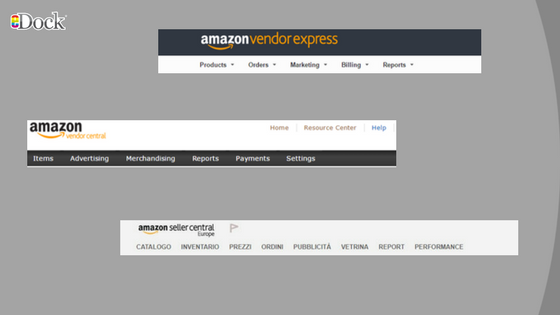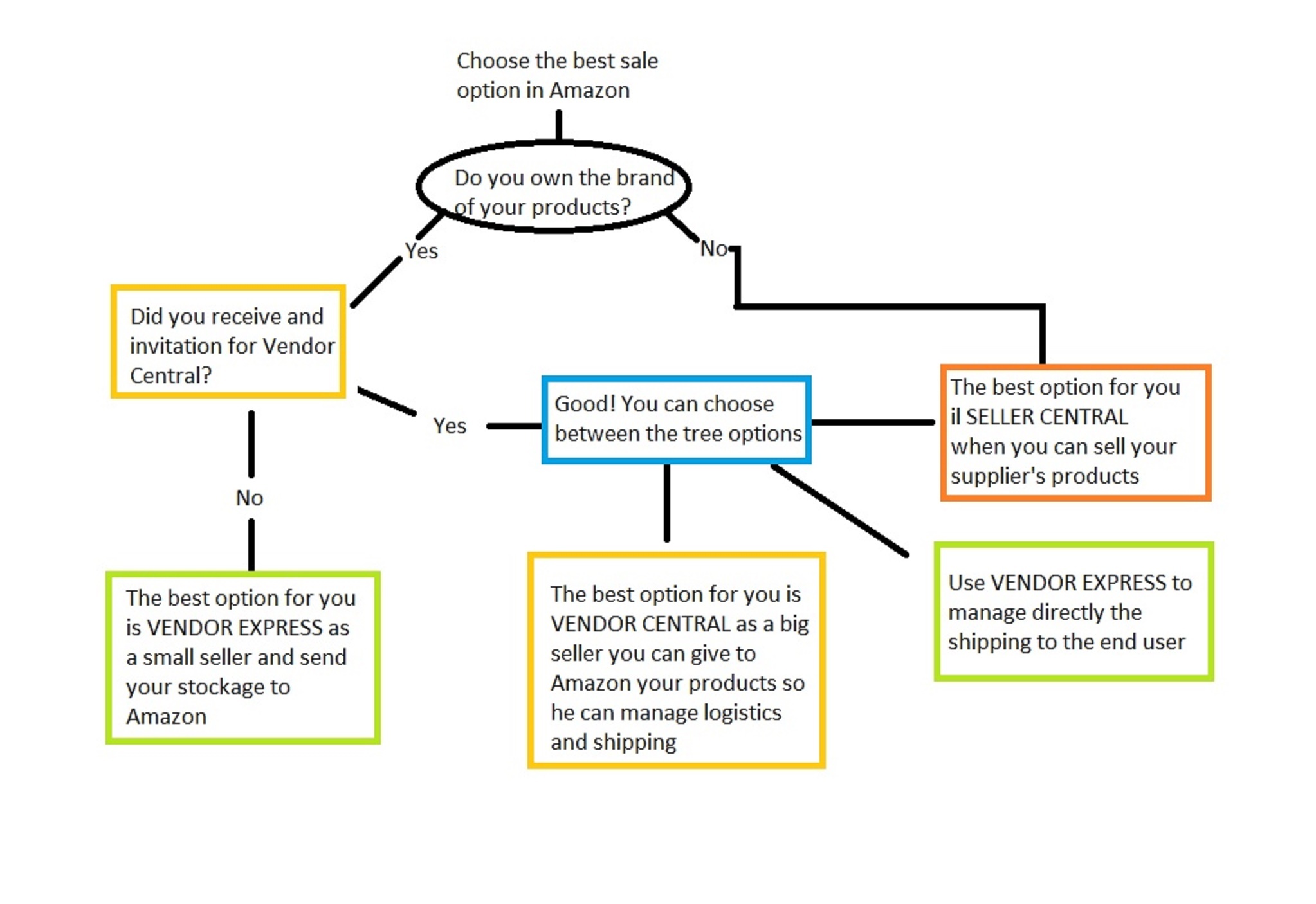
Have you ever heard of Vendor Central and Seller Central?
The difference it is simple and it replies to these questions: who is going to sell your product? You or Amazon itself?
The Vendor Central is the platform for sellers who supply goods directly to Amazon. In this case, Amazon itself becomes the distributor of their products.
The Seller Central, indeed, is that platform used as direct sale to Amazon final users and it is used daily to manage your sales.
How do they work and what do they offer?
Let’s start with Seller Central. Its interface, that is also the most used by brand ad also reseller, could be used daily by sellers as inventory for products to offer to the end users.
Inside, you can manage your offers (modifying prices and quantities), manage orders and use advertising tools.
The Vendor Central has the same function but it is only used by producers and distributors which are wholesaler inside Amazon.
In Amazon, you can distinguish if a product is “sold” by Amazon if you see the heading “Sold and Shipped by Amazon”. With this model of sale, the producer can compensate for its loss in managing high volume of sales. In this way, the producer can concentrate in other issues rather than on selling to the final users.
The most important issue that distinguishes Vendor Central to Seller Central is the possibility to join only at Amazon’s invitation.
In this table you find a summary of the two platforms features:
Seller Central |
Vendor Central |
|
Open to everyone |
Only at invitation |
|
Sell directly to the end user |
Sell to Amazon |
|
Different options for logistics |
Amazon FBA |
|
14 days for sale screditing |
90 days for sales crediting |
|
Retail prices are defined by brands |
Retail prices are defined by Amazon |
|
Limited advertising options |
Different advertising options |
|
Prices of products established by sellers |
Prices of products established by Amazon |
|
Registered trademarks have their own specific pages |
A+ Pages |
|
Possibility to join Prime |
Prime assured |
The benefits of using Vendor Central
Simplicity: you just have to sell big pallet of items to Amazon and ship all the stock to the logistic centre. Amazon will manage the inventory, logistics, refund and customer service.
Security: You sold your stock to Amazon, so Amazon is the new owner of the items. It goes without saying that Amazon has interest in selling their own products instead of other sellers’ items. Amazon has home court advantage, and for this reason it can offer big advantages and promotions.
These advantages include every item sold by Amazon, they could be:
- the fact that an item is sold and shipped by Amazon hearten the end user by ensuring safe shipping, refunds and replacements. With this service, the supplier will indirectly benefit from Amazon reliability.
- More possibilities to gain Buy Box (Amazon algorithm boosts its own products)
- eligibility for Amazon Prime
- eligibility for Amazon Prime Pantry and Subscribe & Save
Protection: your page content will be protected from other seller’s update. Moreover, Amazon will also protect your brand as it is a partner of your business and it is investing in your brand.
Access to AMS: with Amazon Marketing Services (AMS) you will have access to marketing opportunities that are not entirely available in other seller programs:
- A + Contents: A + pages are able to show your products and promote your brand. According to Amazon, A+ increases the customers’ engagement and sales of 3-10%.
- Amazon Vine: the best revisor can test you products and review them before your inventory is in stock. In this way, you will be sure you’ll have success with reliable reviews and feedbacks.
- Access to detailed analytics that aren’t available in other sellers programs.
An other option is available for producers and brand owners: the Vendor Express.
What is it? It is a “redimensioned” wholesaler program offered by Amazon to small-scale producers. It is perfect for young businesses or artisanal producers.
Vendor Express is an option only if you own the intellectual property of the product you sell to Amazon. If you don’t have this privilege, you can try to join other seller programs in order to keep third parts privileges.
At the end, with Vendor Express you are a wholesaler and you sell directly to Amazon, as for Vendor Central.
The benefits of using Vendor Express
This program is less strict than Vendor Central. Indeed, it is not required an invitation to join. You don’t have to pay annual or monthly fee to join. Vendor Express could be a good way to join business if you own a small scale production or if you own a young business but you dream to become bigger.
The benefits are equal to Vendor Central but with some variations:
- Limited access to AMS (no access to A+ content and Amazon Vine)
- Choose if you want FBA of if you want to ship yourself the products to the final user (shipping prepaid by Amazon)
- Free shipping to Amazon logistics or directly to Amazon end users
- No payment for handling or storage.
Do you want to know what' s the best for your business? Follow the diagram and read the result!


